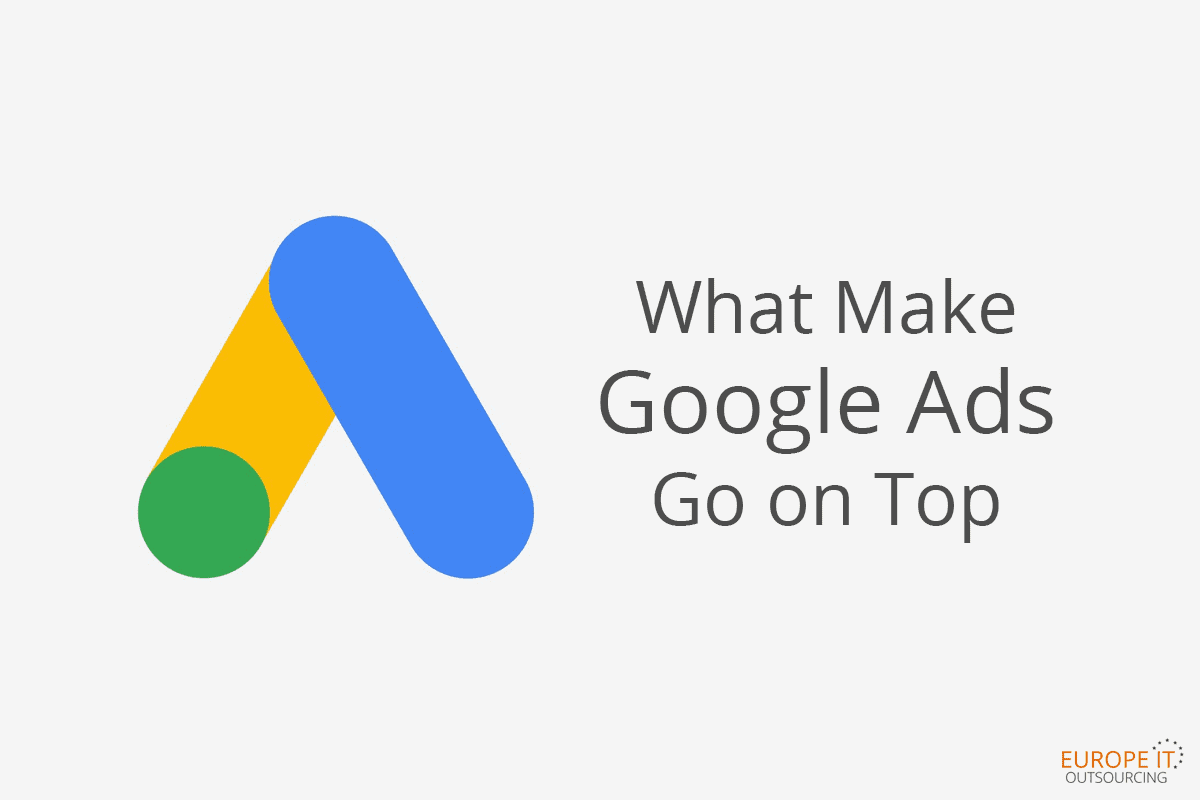
What Make Google Ads Go on Top?
Ads competes with other ads each time there’s an opportunity to be seen by a good prospect — and the winner isn’t simply the highest bidder. Google’s ad auction works to help the most useful ads for viewers get the most visible spots on the page. This course explains how to win better ad placements by making your ad more useful to your customers.
Ads position factors
- The bid,
- The impact of ad formats you have enabled,
- The expected clickthrough rate (CTR),
- Ad relevancy
- The landing page experience
And to understand their influence, we’ll start by taking a look at the Google Ads auction — the system responsible for taking all these factors into consideration and ultimately deciding your ad’s position and even whether it shows up at all.
The Google Ads auction
The Google Ads auction is the process that happens with each Google search. It decides which ads will appear for that specific search, which order those ads will show on the page, and how much the advertiser (that’s you!) will pay for that placement.
Learn more about Google Ads Campaign types & settings
1 – The Bid First there’s your bid amount.Not to be confused with the amount a click on your ad actually costs, this is the maximum amount you are willing to pay for a user to click on your ad and visit your site.
To ensure good value for all, top bids don’t necessarily lead to top rank on the search results page. As it is becoming pretty clear by now, there are a number of other factors that the auction considers to make that determination!
2 – Expected clickthrough rate (CTR) is the prediction of how often your ad will get clicked when shown for a keyword. To determine this rate, Google Ads takes into account how well your keyword has performed, that is, how users responded to your ad by clicking on it or not in the past.
3 – The landing page: An ad is only useful if its landing page helps a user find what they’re looking for! A positive landing page experience:
- Includes relevant and original content that helps the user complete their task
- Is easily navigable
- Articulates your business clearly
4 – Ad relevancy is calculated by analyzing the language in your ad to determine how well it relates to the search query. Ad relevancy is a key factor in the auction process, enabling users to see only useful ads that are relevant to the search performed.
5 – Ad formats, like those that include various ad extensions, may influence rank as well. For example, using various ad extensions, like a sitelink to a page on your website, your address, or phone number, may serve to bolster your rank.
The Quality Score
So, we’ve looked at how the Google Ads auction works to consider many of these factors to identify and reward quality ads — those that are estimated to perform better by giving people who click on them exactly what they’re looking for quickly and effortlessly come out on top!
So how can you get a general sense of which ads might be of higher quality? One estimate is your Quality Score. Quality Score is the 1-10 rating that is reported for each keyword in your account calculated by estimating the quality of your ads and their associated landing pages.
A high Quality Score means that our systems think your ad and landing page are relevant and useful to someone looking at your ad.
Ad Rank
Okay, so let’s get back to Ad Rank — that value that’s used to determine your ad placement, and even eligibility, based in part on that Quality Score. Remember, ads with the highest Ad Rank get the most desirable placements on the page.
But, naturally, their ads have different quality, from low to high! Remember those factors that can impact quality — things like ad relevancy, the landing page experience, and that expected clickthrough rate, are all inputs affecting quality. Here’s how they stack up from low to high.
When it comes to how ads rank, however, another factor at play is the impact of various ad formats. Let’s see how our four advertisers compare here:
- Ad 1: No formats enabled means no format impact
- Ad 2: Eligible for one format, so low expected impact
- Ad 3: Includes lots of extensions, so anticipated high impact
- Ad 4: Includes a couple formats, so expected medium impact
Let’s see just who’s getting to the top of the search results page. This is where quality and formats come into serious play!
The ads with the highest rank display at the top in order of priority — and that advertiser who was willing to bid up to $4 a click actually won’t be eligible to display ads at all! With a score that low, the auction will simply elect to not show the ads.
It’s easy to get lost in the details with Ad Rank and Quality Score. Just remember that Ad Rank is influenced by three factors:
- Your bid,
- Available ad formats,
- And components of ad quality.
Ad Rank matters because it determines your ad position (where ads appear on the page). In fact, it determines whether your ad will show at all.
These measures give you many ways to improve your performance in the auction, while also improving the user experience.
Read more about About ad position and Ad Rank

